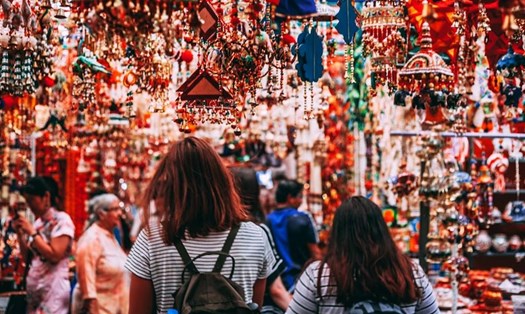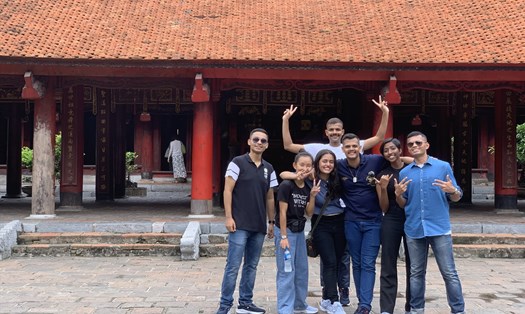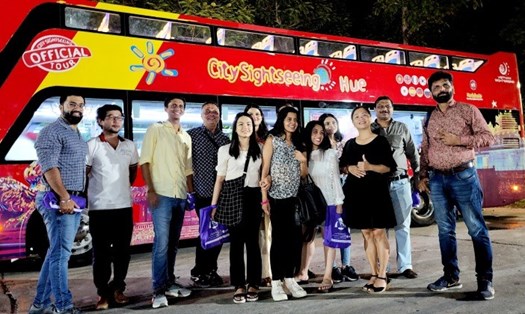China used to be Southeast Asia's largest source market before the pandemic, but the zero-COVID policy is a bottleneck for the region's tourism recovery.
The common difficulty
Since Singapore opened the border in April and welcomed vaccinated international visitors, Stanley Foo, founder of Oriental Travel and Tours, said he has seen a rapid increase in Indian tourism.
The Lion Island recorded a record number of tourists from India in 2019 - 1.4 million, according to the Singapore Tourism Bureau, but Foo said that "there is nothing special" when Indian tourists return.
Of the 1.5 million international visitors to Singapore in the first half of this year, 282,000 were from Indonesia, 219,000 were from India, but only about 17,000 were from China - a welcome number compared to 3.6 million in 2019.
Not only Singapore is in this situation. The absence of Chinese tourists - mainly due to strict zero-COVID policies and border closures - has affected the entire Southeast Asian region. From welcoming more than 11 million tourists to China before the pandemic, Thailand has only welcomed a few thousand visitors this year. A similar story is happening in Indonesia, as the number of Chinese visitors to the island nation has dropped from more than 2 million in 2019 to about 20,000 this year.
To overcome the shortage of Chinese visitors, many Southeast Asian countries are hoping for a wave of Indian visitors after the pandemic. But Singapore's tourism industry could act as a show that the wave of Indian visitors may never explode as expected.
The void is too big
Experts agree that India is an important source market for inbound tourists in Southeast Asia, but this market cannot fill the void left by Chinese tourists - at least in the short term.
Singapore strives to attract Indian visitors to the region through promotional campaigns, roadshows, and promotional activities. For example, the campaign "Enjoy Your Family Times Now in Singapore" offers airfares and tours for Indian visitors from April to June. This campaign attracted about 50,000 customers booking services at resorts such as Resorts World sentosa and Gardens by the Bay.
"We are aiming for market share such as families with young children, paid and reward tourists, cruise ship visitors," said GB Srithar, director of India, the Middle East, South Asia and Africa at the Singapore Tourism Corporation. Mr. Srithar added that India is expected to "contributing greatly" to the target of 4 to 6 million international visitors to Singapore this year.
Benjamin Cassim, lecturer in the department of tourism and hospitality at Temasek Polytechnic Vocational College, commented: "A big challenge is the spending of this group of tourists. Singapore is a high-end tourist destination, which will affect the island's attraction to Indian visitors".
Agreeing with this view, Kevin Cheong, head of tourism and destination development at Syntegrate Consulting Group, commented that Chinese visitors often spend more heavily than Indian visitors, and are willing to take advantage of the holidays.
"We need to look at the travel and spending trend when we are targeting the Indian market. Some groups of tourists with mid-income incomes will not find Singapore attractive because of the price," said Mr. Cheong.
An example of how Singapore is "inferior" in terms of prices is the average hotel room price that has increased to its highest level in the past 10 years: 184 USD per night in July. Five-star hotels also have an average room rate of $240 per night.
This expert also pointed out that the domestic and international transportation system in China is much better than in India, so people can easily travel when traveling abroad. For example, in India, it takes people a day to travel if their home is about 100km from the airport, while Chinese take only 45 minutes to an hour for the same distance thanks to the high-speed train system to the airport.
Cassim and Cheong both agree that Indian tourists have many other options when looking abroad, such as Dubai - much closer to Southeast Asia - where they have to fly for up to 5 hours. In terms of distance from India, Southeast Asia also has "competitors" in Europe such as Switzerland, France and Italy.
Hope and reality
Despite Singapore's efforts to attract Indian tourists through attractive stimulus campaigns, Christopher Khoo, CEO of international travel consulting firm MasterConsult Services, pointed out that advertising programs are not strong enough to overcome the harsh reality of a world economy that has not yet escaped the post-COVID crisis.
"In terms of demand, two years of economic difficulties have tightened the income of many people. The current increase in inflation, recession, and tensions between Russia and Ukraine certainly make many people hesitant when considering the next holiday. For this reason, I am optimistic about the pre-pandemic resilience of major markets before the end of the decade."
However, Mr. Khoo still expects Singapore to make as many efforts to attract Chinese tourists as to the Indian market, when Beijing opens the border.
"The Singapore Tourism Administration has been quick to implement public outreach campaigns in India, similar to other major markets. As soon as China removes tourism restrictions, I am sure Singapore will also react immediately to promote this market" - Mr. Khoo expressed.
Tourism expert Cheong agrees with this, especially with Singapore's direction of promoting the island with more to explore than a transit point.
"It should be a key long-term strategy, not just to recover the tourism industry. To do so, we must continue to sell Singapore's experience values," said Mr. Cheong.





